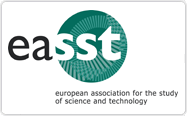Situated Expert Judgement
QSAR Models and Transparency in the European Regulation of Chemicals
DOI:
https://doi.org/10.23987/sts.65249Abstract
In this paper we discuss the kind of expert judgement demanded by the development of a particular class of models known as “Quantitative Structure-Activities Relationship” (QSAR) models, used to predict the toxicity of chemical substances, for regulatory and other purposes. We analyse the production of these models, and attempts at standardizing them. We show that neither a technical nor a procedural standardization is possible. As a consequence, QSAR models cannot ground a production of knowledge along the lines of “mechanical objectivity” or “regulatory objectivity”. Instead, QSAR models imply that expert judgement is situated, re-worked for each new case, and implies an active intervention of the individual expert. This has important consequences for risk governance based on models. It makes transparency a central concern. It also means that new asymmetries emerge, between companies developing sophisticated models and individual experts in regulatory agencies in charge of assessing these models.





